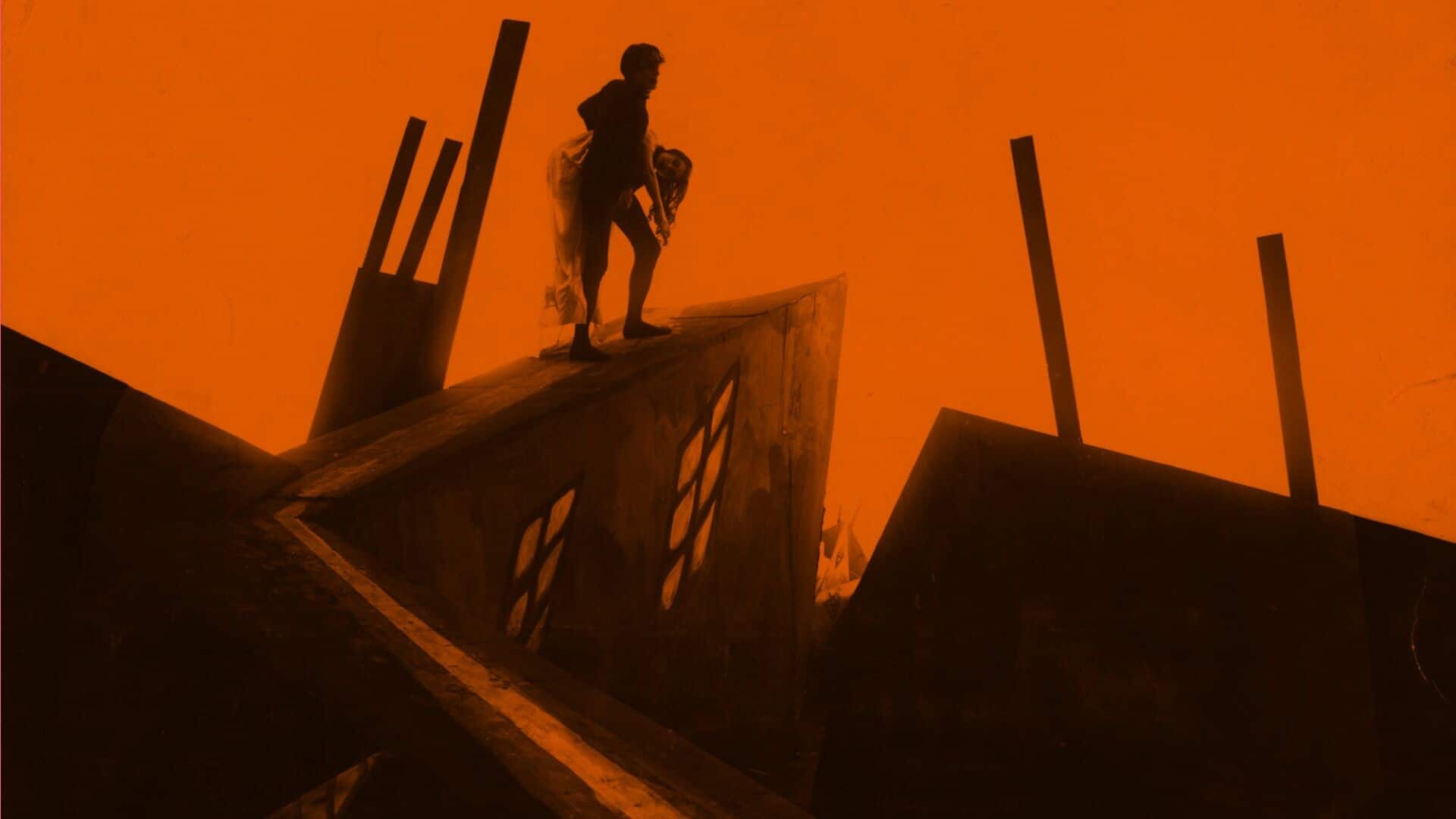When countries are at war, every industry within them is also under attack. Or at the very least, is vulnerable to change. After WW1, German films became stranger and quite a bit darker. The control of the government banning foreign films also aided to their isolation. From there, German Expressionism was born. But what is German Expressionism in film? Let’s find out.
Expressionism Film
A History of German Expressionism
To define this style, we need to understand where it comes from and why it looks like nothing else from that era. Once we lay out the definition and a brief history, we'll jump into some examples.
GERMAN EXPRESSIONISM DEFINITION
What is German Expressionism in film?
German Expressionism is a particular artistic style that first appeared in poetry and theatre around 1910. It became popular in film 10 years later after WWI. It comes partly from German Romanticism and gives a subjective view of the world. It visualizes the country's collective anxiety through distorted and nightmarish imagery. Expressionists had little interest in their work being aesthetically pleasing. This style flourished after the horrors of WWI, and the inevitable economic devastation that followed. The first few films that can be described as pure German Expressionism include The Cabinet of Dr. Caligari and Metropolis.
Characteristics of German Expressionism
- High angles
- Deep shadows/chiaroscuro lighting
- Extreme camera tilting
- Impossible sets
When you consider the real-life situation in Germany after the war, it's no wonder that art and cinema got as dark as it did.
Lotte Eisner, a German film critic, labeled it “helldunkel,” which she defined as “a sort of twilight of the German soul, expressing itself in shadowy, enigmatic interiors, or in misty, insubstantial landscapes.”
German Expressionism in film is associated with high contrasts of darks and lights to convey nightmarish sets, often using the chiaroscuro lighting technique. Let's look at some of the classic examples that cemented this aesthetic steeped in shadows.
Examples of GERMAN EXPRESSIONISM
Icons of German Expressionism
Now that we have somewhat of an understanding, let's look at some examples. German Expressionism isn't the easiest style to define, but seeing is believing, right?
The Cabinet of Dr. Caligari (1920)
Written by Hans Janowitz and Carl Mayer, The Cabinet of Dr. Caligari was based on the writers' experiences as WWI soldiers and their distrust of authoritarian leadership. The filmmakers chose to deliberately distort reality in order to disorient the audience to invoke a feeling of the time rather than a truthful or realistic depiction.
Nosferatu (1922)
The grandfather of all vampire movies that set the bar for every horror movie to come after. F.W. Murnau's film is a thinly veiled adaptation of Bram Stoker's "Dracula." And it holds up today as one of the most visually effective horror films. We've got the entire film here, if you dare.
Nosferatu (1922)
Metropolis (1927)
Fritz Lang's silent film uses expressionist imagery to comment on technology consuming society. The film is deep in exaggerated imagery heightening the emotion that drives the plot.
The Haunted Screen (1998)
If you're looking for a super deep dive into German Expressionism, we've got a feature documentary called The Haunted Screen. It covers everything including the social circumstances that informed these artists and their rarely seen films.
German Expressionism radically altered cinema. In particular, the love of chiaroscuro lighting survived and evolved into film noir and the horror film. There's no denying that it helped build the visual foundation on which the entire genre rests.
If you're looking for the perfect example of German Expressionism's legacy, consider the work of Tim Burton.
Tim Burton, a direct stylistic connection
Edward Scissorhands is a direct descendant of Dr. Caligari. You can see the angled and broken architecture of the set, the extreme light/shadow work, and the look of Edward himself. Now look at Burton's other work and you'll see that the haunted soul of German Expressionism lives on.
Related Posts
Up Next
What is chiaroscuro?
In this post we briefly discussed the criteria of German Expressionism in film. Deep shadows and high contrast lighting create a nightmarish feel and are the markings of the style. That technique is expanded upon as we define the term chiaroscuro.
Up Next: What is chiaroscuro? →
Showcase your vision with elegant shot lists and storyboards.
Create robust and customizable shot lists. Upload images to make storyboards and slideshows.
